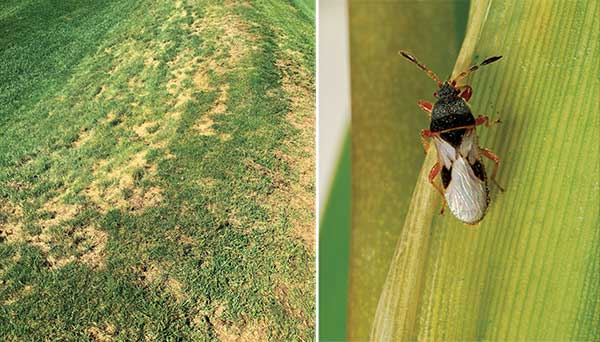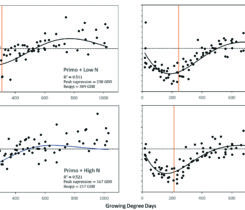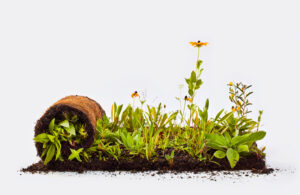Turf Pest of the Month: (Chinch) bugging out

Left: Chinch bug damage on a south-facing slope at a Pittsburgh-area golf course. Right: A closer look at the Blissus insularis, the southern chinch bug. (Photos by: Mike Agnew, Ph.D., Syngenta (left); Lyle Buss (right))
Chinch bug damage in the southern U.S. was long thought to be a severe problem in mostly St. Augustinegrass and zoysiagrass, but ask Jim Kilgore, golf course superintendent at The Dye Preserve in Jupiter, Fla., and he’ll tell you that these critters aren’t quite so picky.
“I have more damage in my Celebration bermudagrass fairways and rough than in my St. Augustine (rough) right now,” Kilgore says. He says the end of July and August and the early fall are when chinch bug damage is at its worst.
“Chinch bugs are known to be more of a residential lawn pest, but the past couple years, we’ve seen more incidences of chinch bugs damaging golf course turf,” says Adam Dale, Ph.D., assistant professor of entomology and nematology at the University of Florida.
There are three species of chinch bugs considered pests of turfgrasses in the U.S.: the southern chinch bug in the South; the hairy chinch bug in the northern U.S.; and the western chinch bug in the West. According to Dale, the damage, feeding profiles and management strategies for all three are very similar.
Drought and full sun conditions promote chinch bug abundance and damage, and proper irrigation and maintaining proper soil moisture and turf health are the best practices to keep the bugs at bay. Fertilization is also a factor to consider.
“Research has shown that nitrogen fertilization rates are positively correlated to chinch bug abundance — so I would tell superintendents to be mindful of how much nitrogen they’re putting out,” Dale says.
The type of infestation dictates the best control option. Systemic neonicotinoids are best if chinch bugs are present without severe damage, and if both chinch bugs and damage are present, Dale recommends a pyrethroid or other broad-spectrum products. A combination product with a neonicotinoid and a pyrethroid can provide rapid knockdown of the pest population and residual control from the systemic, he says.
Dale adds that chinch bug populations have developed resistance to at least four chemical classes in Florida alone — so rotating chemical classes is important.
At The Dye Preserve, after trying a number of products, Kilgore now uses a granular product with pyrethrin.
“I usually tell my guys when applying (insecticide) to go 3 feet outside the (damaged) area because (the bugs) work their way out into the good grass,” Kilgore says. And, he says, timing is everything.
“When chinch bugs destroy an area, it takes double the time than normal for the grass to come back,” he says. “Just stay on top of it — a spot can go from the size of five-gallon bucket to the size of a cart in a matter of days.”












